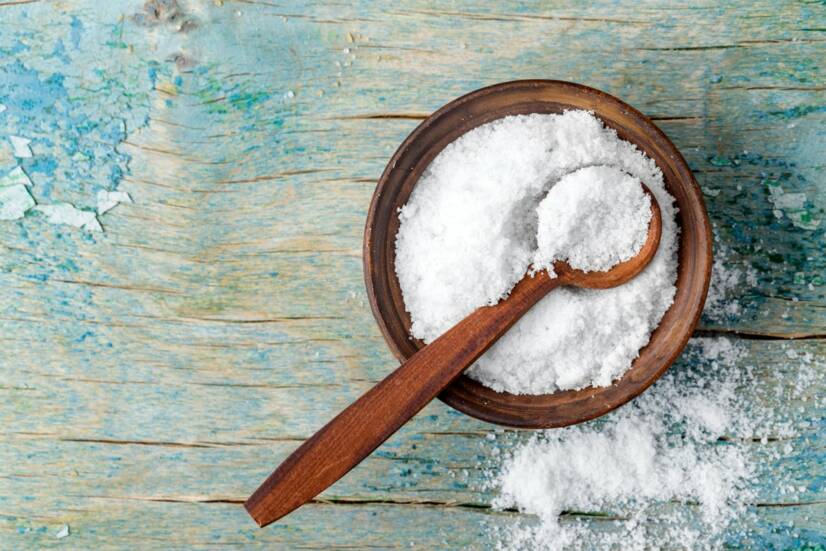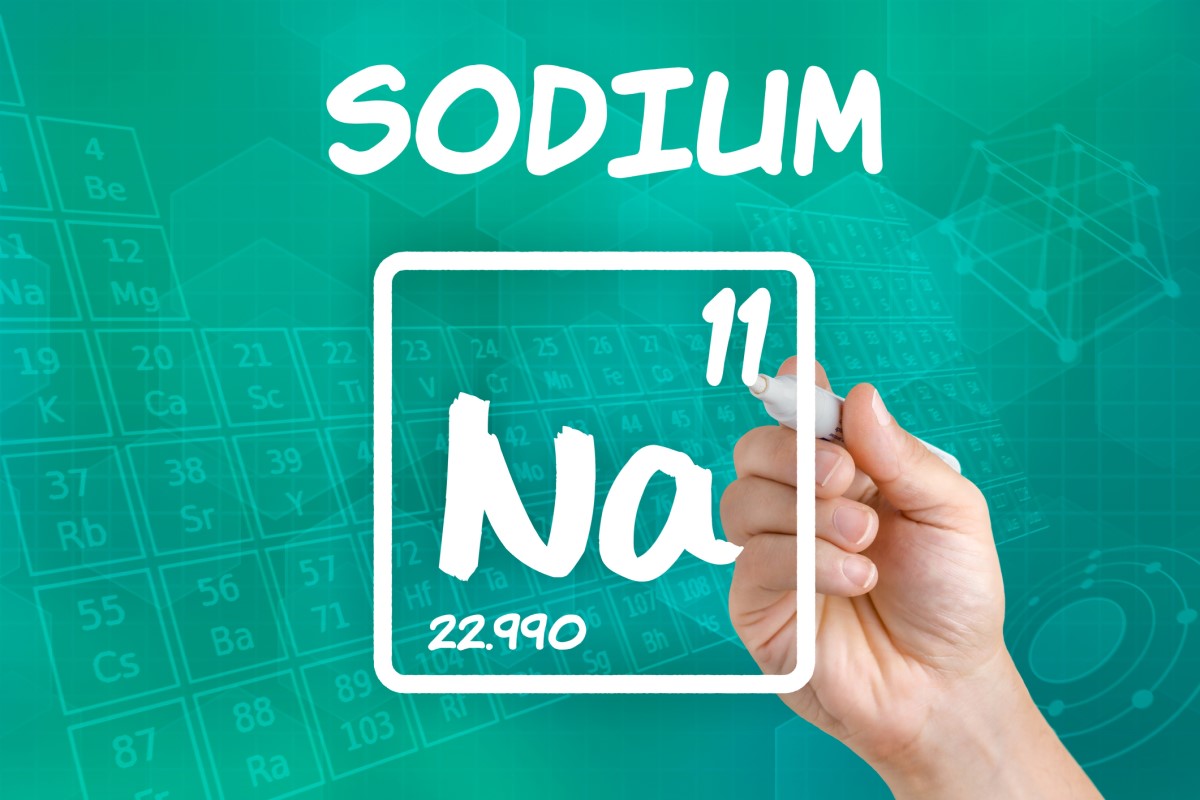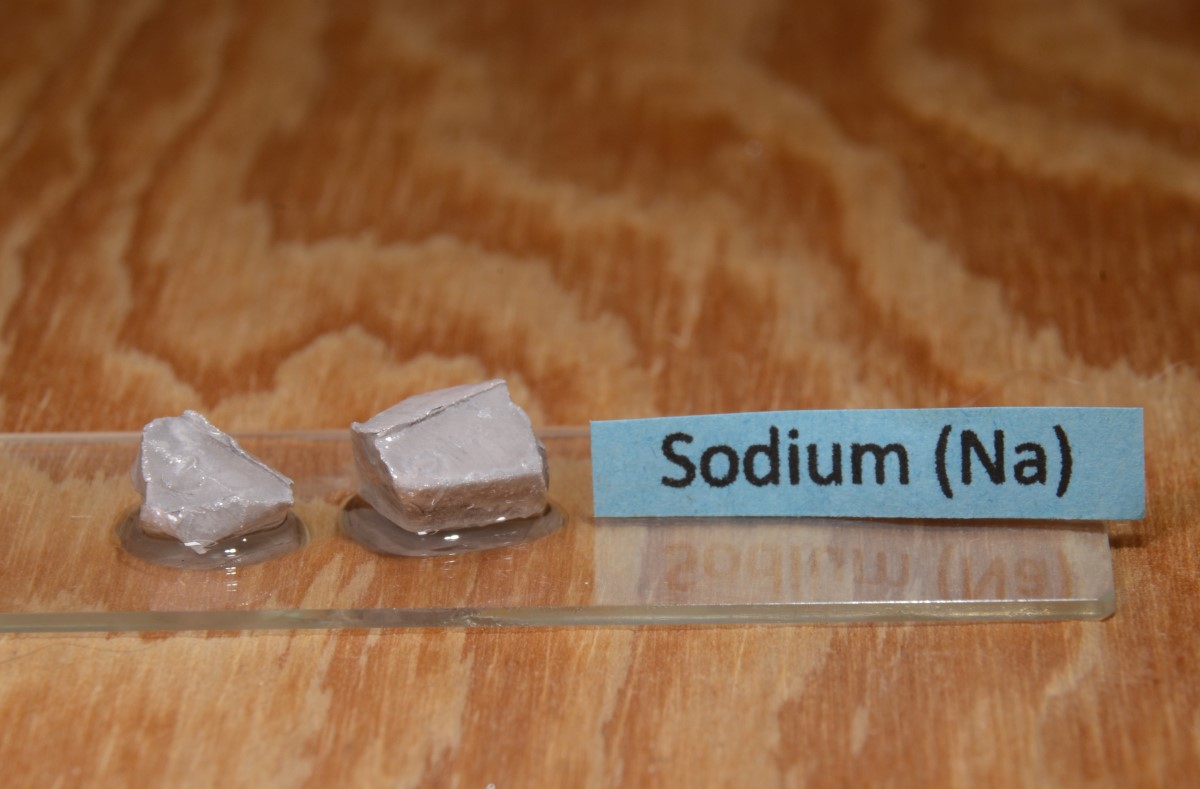- pubchem.ncbi.nlm.nih.gov - Sodium
- ema.europa.eu - Questions and answers on sodium used as an excipient in medicinal products for human use
- ema.europa.eu - PRAC recommendations on signals
- ncbi.nlm.nih.gov - Sodium, Pasquale Strazzullo, Catherine Leclercq
- ncbi.nlm.nih.gov - Hyponatremia, Helbert Rondon, Madhu Badireddy
- who.int - Guideline: sodium intake for adults and children
- Resources in Slovak language:
- solen.cz - Hyponatremia: diagnostic procedure and new treatment options, MUDr. Jan Jiskra, Ph.D.
Sodium and its effects on health. Did you know it is also found in medicines?

How much salt do you take in daily? You will be unpleasantly surprised. What effect does sodium have on our body? Do you know the safe amount?
Article content
- What do we know about sodium?
- Most common sodium compounds
- How is sodium produced and where is it used?
- The importance of sodium's biological function
- Why is sodium important for us?
- What happens to sodium in the body?
- What happens when sodium levels are high or low?
- What is the function of sodium in medicines?
- WHO recommendations for daily sodium intake
Have you ever wondered how much salt you consume each day? You may be unpleasantly surprised.
What effect does sodium have on our body, what amount is safe and when does it threaten our health?
What do we know about sodium?
Sodium is the fourth most abundant element on Earth. It makes up approximately 2.6% of the Earth's crust. It is also part of the universe, such as the Sun and stars.
The discoverer of sodium is the English chemist Sir Humphry Davy, who in 1807 isolated pure sodium from its compound sodium hydroxide by electrolysis for the first time.
The name sodium comes from the English word soda and the Latin word sodanum.
The chemical name sodium Na is derived from the Latin name natrium and was formed from the Greek word nitron. The sodium compound sodanum was used in the Middle Ages as a remedy for headaches.
Some sodium compounds were used as early as the time of the ancient Egyptians, Romans and Greeks. They used sodium carbonate in combination with potassium carbonate as a detergent.
Until the 18th century, people did not know the difference between sodium and potassium.
Sodium belongs to the group of alkali metals. It ranks first in terms of abundance in this group of chemical elements. The name alkali metals is based on the fact that these elements react with water to form alkalis, i.e. bases.
In addition to sodium, the alkali metals include lithium, potassium, rubidium, caesium and francium.

Alkali metals are elements of group 1A of the periodic table of chemical elements (vertical bars).
Sodium (Na) is classified in period 3 (horizontal bars).
Sodium, like all other alkali metals, is highly reactive. Because of its high reactivity (e.g. with water or oxygen), it therefore does not occur in nature in its elemental (i.e. free) form, but always as a compound. We speak of sodium compounds.
In terms of its nature and properties, sodium is a shiny, silver-coloured metal.
Its colour changes to grey when exposed to air.
It is soft, so it can be cut, for example with a knife.
It has a lower density than water and therefore floats on the surface.
Because sodium is a metal, it has good conductivity. It conducts electricity and heat.
When heated in air, it ignites and burns with a characteristic yellow flame.

Table of basic information about sodium
| Name | Sodium |
| Latin name | Natrium |
| Chemical name | At |
| Classification of elements | Alkali metal |
| Grouping | solid |
| Proton number | 11 |
| Atomic mass | 22,98976928 |
| Oxidation number | +1 |
| Density | 0.97 g/m3 |
| Melting point | 97,8 °C |
| Boiling point | 883 °C |
| Hardness | 0,4 |
Most common sodium compounds
Sodium is one of the most abundant elements on Earth. It is found in the surface layers of the Earth's crust. Due to its ability to dissolve easily, it is also a component of water, whether we are talking about seawater or underground mineral water.
When sodium water came into contact with rocks on the Earth's surface, sodium also became part of them. This is how minerals are formed.
Probably the best known and most widely used sodium compound is sodium chloride, chemical formula NaCl.
It occurs naturally as the mineral halite. Deposits of this mineral occur in dried lakes and seas. Sodium chloride is part of our daily diet and is known as table salt.
We also list other compounds that sodium can form that have uses in our daily lives.
- Na2CO3 - sodium carbonate or soda
- NaHCO3 - sodium bicarbonate or baking soda
- NaOH - sodium hydroxide or caustic soda
- NaNO3 - sodium nitrate or chili lime
- Na3AlF6 - sodium hexafluoroaluminate or cryolite
- Na2SO4 - sodium sulfate
- Na2B4O7. 10H2O - sodium tetraborate or borax
Sodium is also an essential component of plant and animal cells.
How is sodium produced and where is it used?
For commercial use, sodium is currently obtained by the physicochemical process of electrolysis of molten sodium chloride.
The starting compound is a molten mixture of calcium chloride and sodium chloride. The electrolysis produces calcium, which, due to its higher melting temperature (compared to sodium), solidifies and separates from the sodium.
Sodium alloys are used in the food, paper and glass industries, in the manufacture of soaps and in the chemical, textile and, last but not least, pharmaceutical industries.
The importance of sodium's biological function
From a biological point of view, sodium is an essential substance. It is essential for the proper functioning of the body and performs several vital functions.
It is the main cation contained in the extracellular fluid (fluid outside the cells, e.g. blood plasma). Most of the body's sodium stores are found in the extracellular fluid. It is also a component of the body's cells.
The normal blood sodium level is approximately between 135 mmol/l and 145 mmol/l. If the amount of sodium decreases or increases from its physiological concentration, pathological conditions occur.
We are talking about the following cases:
- hyponatremia - a reduced blood sodium level below 135 mmol/l
- hypernatremia - increased blood sodium level above 145mmol/l
The physiological requirement for sodium in adults is between 165 and 230 mg per day.
This requirement is usually fully met by a balanced daily diet.
The amount of sodium that needs to be taken in during the day also depends on a number of factors, such as the level of sweating during physical activity, the environment or temperature conditions (higher temperatures increase sweating and therefore the sodium intake requirements are higher).
The average sodium content of an adult male is 92 g. Half of this amount is localized in the extracellular fluid, the rest in cells and bones.
The current trend is that the amount of sodium actually needed by the body is exceeded several times over. This is due to excessive consumption of salt in the diet.
A person should ideally take about ¼ teaspoon of salt per day.
Why is sodium important for us?
Sodium plays a key role in maintaining cellular homeostasis (stability), regulating fluid balance and acid-base balance (the ratio of acidic to basic components). By affecting the amount of fluid in the body and the associated blood volume, sodium is involved in the regulation of blood pressure.
It is also important for muscle and nerve function and is involved in the transport of nutrients and other substances across cell membranes.
Which foods are sources of sodium?
The main source of sodium in the diet is sodium chloride (common table salt). This is used daily in food production and processing, in food preparation and flavouring, etc.
The total amount of sodium a person takes in in the diet is a combination of:
- the small amount of sodium that is naturally present in food
- a larger amount of sodium that is used in food preparation or flavouring
- an even larger amount of sodium that is added to food during its production and processing
In addition to the above, sodium is also present in some medicines administered orally or parenterally (by injection or infusion). The amount of sodium in medicines is often not negligible and it is important to take this into account.
The sodium content of foods is highly variable and depends on the origin of the food (e.g. animal foods naturally contain more sodium) and also on the degree of processing of the food (sodium is added to the food during processing or repackaging).
Low-sodium foods are those that contain no more than 140 mg of sodium per serving.
High sodium is defined as 400 mg or more.
Examples of naturally low-sodium foods are fruits (5 mg/100 g), vegetables (10 mg/100 g), milk (50 mg/100 g), eggs (80 mg/100 g), fresh fish (100 mg/100 g), or cereals and oils.
In the case of processed foods, the sodium content may change significantly from its original state. This is particularly true for meat and meat products or cheese. The sodium content of these foods increases significantly.
Comparison of foods and their sodium content in their raw and processed state (table)
| Type of food | Sodium content per 100 g | |
| Cheese | In the raw state | 620 mg |
| Processed | 1320 mg | |
| Wheat, bran | Unprocessed | 48 mg |
| Flakes | 1000 mg | |
| Potatoes | Raw, cooked in unsalted water | 9 mg |
| Canned | 250 mg | |
| Peas | Raw, cooked in unsalted water | trace amounts |
| Canned | 250 mg | |
| Salmon | In the raw state | 110 mg |
| Canned | 570 mg | |
| Smoked | 1880 mg | |
| Tuna | Raw | 47 mg |
| Canned in oil | 290 mg | |
What happens to sodium in the body?
Of all the possible routes of absorption, sodium is absorbed to the greatest extent and in the greatest quantity in the digestive tract, i.e. in the small and large intestine.
More than 95% of sodium from food is absorbed in this way.
The balance of sodium in the body is closely related to the fluid balance, i.e. the amount of salts changes with the amount of total body fluid.
Let us explain this with a simple example.
The human body works by trying to maintain a constant amount of total fluid and electrolytes (sodium and potassium).
If the sodium level increases significantly (the blood is too concentrated), the body tries to "dilute" the blood, i.e., increase its volume. The body sends a signal and the person starts to feel thirsty, which leads to increased water intake.
In addition to thirst, another mechanism is triggered. Substances are synthesized that directly affect the kidneys so that they retain more water.
This is the so-called combined effect, in which the amount of total fluid and electrolytes is brought back into balance.
Otherwise, if the sodium level is significantly reduced, the kidneys excrete more water. In this way, the balance is restored.
The kidneys therefore play a major role in regulating sodium levels in the body. It is through the kidneys that most of the sodium is eliminated from the body.
In adults, a normal urinary sodium level is considered to be 20 mmol/l in a single urine sample (40 to 220 mmol/l per day).
The rate of sodium reabsorption into the blood via the kidneys depends on individual needs and ranges from 0.5 to 10 %.
The body's own chemicals, such as noradrenaline, aldosterone or insulin, increase sodium reabsorption.
Conversely, chemical compounds such as dopamine, prostaglandins or some cardiac peptides promote urinary sodium excretion.
In addition to the main excretory pathway, urine, sodium is also removed from the body to a small extent by faeces or sweating. Excretion by both of these pathways increases with increasing dietary sodium intake.
What happens when sodium levels are high or low?
But what happens if the sodium level in the body is not at physiological levels? What if sodium intake is higher than it should be? Or conversely, is the sodium level too low?
In cases where the amount of sodium exceeds the healthy concentration values upwards or downwards, pathological conditions arise.
These include hyponatremia and hypernatremia.
Hyponatraemia or sodium deficiency
We speak of hyponatraemia when the sodium level in the blood falls below 135mmol/l (with some variation in individual cases). Severe hyponatraemia occurs when the sodium level falls below 120mmol/l.
In general, hyponatraemia is a disproportion between the total amount of body fluids and electrolytes (sodium and potassium). The total amount of body fluids predominates.
In healthy people, the occurrence of hyponatraemia is relatively rare because sufficient daily sodium is taken in from food. There is no risk of hyponatraemia even on a low-sodium diet.
Sodium deficiency can arise for a variety of reasons.
These are some of the factors influencing the development of hyponatremia:
- Significantly high fluid intake or water-binding substances (glucose, mannitol)
- Significant fluid loss through the gastrointestinal tract (during vomiting or diarrhea)
- Kidney disease, cirrhosis, heart disease
- Disturbances in the production of hormones that regulate fluid volume in the body (e.g. vasopressin)
- Iatrogenic cause - hyponatraemia occurring in hospitalised patients
- Use of certain medications
Read how much fluid is too little and how much is too much in the article:
The importance ofdrinking: what is insufficient or excessive fluid intake?
Why is hyponatremia dangerous?
Sodium deficiency can lead to a number of disorders or damage to the body. Symptoms of hyponatremia are usually not outwardly apparent so that sodium deficiency can be clearly diagnosed.
Diagnosis is made by a number of laboratory tests, such as blood serum osmolality, urine osmolality, extracellular fluid volume or urine sodium concentration.
Tabular overview of the risks of acute and chronic hyponatraemia
| Acute hyponatraemia (lasting less than 48 hours) | Chronic hyponatraemia (lasting more than 48 hours) |
|
|
Paradoxically, acute (short-term) hyponatremia is more dangerous to the body than chronic hyponatremia.
Hypernatremia or excessive sodium
A more common case of sodium imbalance in the body is hypernatremia. This is also caused by excessive sodium intake in the diet, as salt is a very common additive in foods.
Hypernatremia occurs when the blood sodium level exceeds 145 mmol/l.
In many people, excess sodium is often mild and does not cause any significant health problems. Nevertheless, elevated sodium levels need to be brought back to normal.
The amount of salt taken up by the digestive tract that is already considered toxic is in the range of 0.5-1 g salt/kg body weight. Ingestion of this amount of salt can be life-threatening.
Hypernatremia can be caused by excessive dietary sodium intake, increased fluid loss and various diseases.
The elderly are particularly at risk from excessive sodium intake. They have a reduced sense of thirst and are also more susceptible to diseases that affect sodium balance.
As with hyponatremia, excess sodium is detected by laboratory tests. It is detected by blood tests or by determining the concentration of sodium in the urine.
The most common symptoms of excess sodium in the blood are:
- Excessive thirst
- Excessive fatigue, lethargy
- Muscle cramps, seizures
- Increased blood pressure
- Heart disease
- Kidney disease
- Bone diseases
Of the symptoms listed above, the biggest risk is elevated blood pressure and the associated development of heart and kidney problems.
Excessive levels of sodium in the body cause an increase in the volume of extracellular fluid, leading to an increase in blood pressure.
Normally, the increased volume of extracellular fluid is regulated by the kidneys. However, the problem arises with excessive sodium intake, kidney disease or in children and elderly patients whose excretion by the kidneys is reduced.
Prolonged elevation of blood pressure is associated with the development of heart diseases such as heart attack, stroke or heart failure, with the development of kidney disorders or dementia.
In children, hypernatraemia occurs due to the lower ability of the body to excrete sodium. This can lead to severe dehydration and the development of convulsive seizures. Long-term intake of large amounts of sodium in childhood increases the risk of hypertension and cardiovascular disease in adulthood.
Lifestyle changes are important
The first step to reducing sodium levels in the body is to modify individual eating habits.
Patients with hypernatremia should follow a diet with limited sodium intake, either in food or from other sources (e.g., medications).
Basic regimen measures include:
- Limiting the intake of table salt, replacing it with other flavourings, preferring sea salt.
- Choosing low-sodium foods
- Preferring home-cooked meals, cooking own meals
- Not using softened water for cooking or drinking
What is the function of sodium in medicines?
Sodium has an important place in the pharmaceutical industry in a wide range of applications.
The sodium present in medicines can have different functions depending on what part of the medicine it forms.
1.
Sodium as the active ingredient (drug) in a medicine. In this case, sodium is the main active ingredient or one of the main active ingredients. Its physiological effects are used to treat medical disorders or diseases.
2.
Sodium as part of the active ingredient. If the medicine is in the form of a sodium salt.
3.
Sodium as an excipient in the medicinal product. In this case, sodium is an important component of the medicinal product. It contributes to the stability of the medicinal product and improves its properties.
It is mainly used as an excipient to increase the solubility of drugs.
It is also used for its emulsifying, chelating, lubricating and antimicrobial properties or as a stabiliser and colouring agent.
4.
Sodium used to prepare another drug for administration. Sodium is not a direct constituent of the drug product, but a solution of its salt (sodium chloride) is used to dissolve another drug product, e.g. powder for injection.
There are now a large number of medicines on the market that contain sodium, either as the active ingredient or as an excipient. In either case, you need to pay careful attention to the exact sodium content of any medicine you take.
This is especially true if you are taking medication for a long time (more than 1 month) or if you are taking more than one medication at the same time. Knowing the sodium content of each medication you are taking is especially important if you are on a sodium-restricted diet or if you have cardiovascular disease.
The highest amounts of sodium are taken primarily in effervescent or soluble dosage forms.
Special caution is needed when taking medications that are available without a prescription. With these medications, your doctor does not have visibility and control over the total amount of sodium you are taking.
Your pharmacist can advise you about the sodium content of over-the-counter medications or give you other recommendations.
For basic information about the sodium content of medicines, see the written information for users that accompanies each medicine. It gives information about the qualitative and quantitative amounts of sodium.
- Qualitative - a list of all sodium compounds contained in the medicine
- Quantitative - the exact amount of sodium (sodium compounds) contained in the medicinal product
In addition to the above, the package leaflet of the specific medicinal product contains a warning about the sodium content. There are three types of warnings according to the amount of sodium present.
These warnings are listed in the following table
| Amount of sodium in the medicinal product | Warning |
| < 1 mmol (23 mg) per dose | The medicine contains negligible amounts of sodium. |
| > 1 mmol (23 mg) per dose | Amount of sodium to be considered. Information on the exact amount of sodium must be provided. |
| > 17 mmol (391 mg) per dose | Medicinal product with high sodium content. Information on the exact amount of sodium must be provided. |
WHO recommendations for daily sodium intake
The World Health Organization (WHO) has issued recommendations for maximum daily sodium intake following possible health risks associated with excessive sodium intake.
The aim of these recommendations is to prevent or reduce high blood pressure and thus cardiovascular disease.
- Adults (aged 16 years and over) can take less than 5 g of sodium chloride (table salt) per day, which is less than 2 g of sodium per day.
- For children (aged 2-15 years), the maximum daily salt intake should be based on the recommended daily allowance for adults, with the amount of salt adjusted to the individual energy requirements of the diet.
A single dose of a high-sodium medicine, i.e. 17 mmol (391 mg), represents approximately 20% of the recommended maximum daily sodium intake. This is an illustrative example of the importance of considering the sodium content of medicines, not just food.
The recommendation applies to all people, with or without advanced hypertension, including pregnant and breastfeeding women.
The exceptions are patients taking medications that have the potential to lower blood sodium levels, or patients on a physician-supervised diet (e.g., patients with diabetes or heart failure).
The above recommendations also do not apply to children under 2 years of age.
Interesting resources
Related










